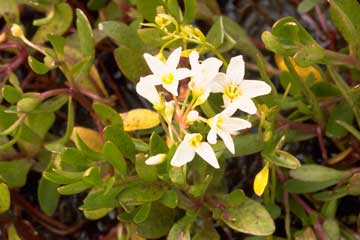
Lewisias (bitterroots)
Common bitter-root, Lewisia rediviva Pursh (left, right). Frederick Pursh recognized this plant as a new genus, naming it for Meriwether Lewis who obtained it at “Traveler’s Rest” near today’s Missoula, Montana (July 1, 1806). Pursh named the species rediviva, meaning “return to life,” because one of Lewis’s specimens bloomed when planted after the expedition’s return. The bitter-root’s striking, many-petaled flowers appear on gravelly ground in late spring. In Blaine and Camas counties (and south to Nevada) the flowers are white; farther north they are varying shades of pink. Indians prized the roots, but white-men found them unpalatable, explaining the plant’s common name.
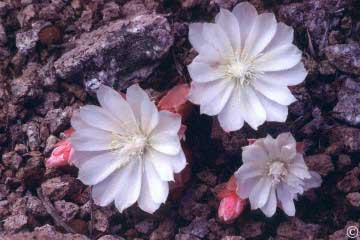

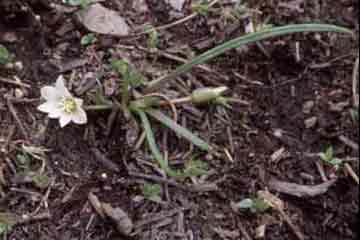
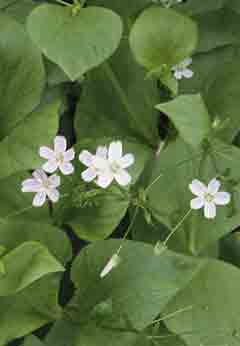
Claytonias and montias (springbeauties and candyflowers)
Species of Montia (candyflowers) and Claytonia (springbeauties) are so closely related that many have been cross-classified between the two genera over the years. Consensus now favors the classification used here. The top four plants were collected by Meriwether Lewis in the spring of 1806, on the Columbia and Clearwater rivers. The name Claytonia honors Virginia botanist John Clayton (1694-1773) who collected the eastern springbeauty Claytonia virginica.
Siberian springbeauty,Claytonia sibirica L. (left) is a common streamside plant, characterized by broad leaves and loose clusters of dainty, small, white flowers.
Lanceleaf springbeauty, Claytonia lanceolata Pall. ex Pursh (right) bears small white- petaled flowers, with pink veins and anthers. Some years, for reasons that are obscure, some of the flower petals have many veins and appear pink, as in our illustration. The plant is common throughout the West, blooming soon after snowmelt on open ground. Lanceolate leaves give the plant its species name.
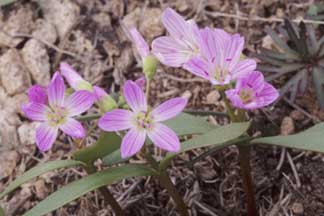

Heartleaf springbeauty, Claytonia cordifolia S. Watson (right) prefers deeply shaded, moist forests. The name, cordifolia, describes the plant’s wide, heart-shaped leaves. Its small white flowers are similar to those of other springbeauties shown here.

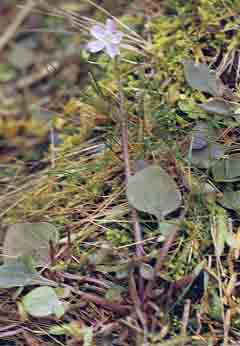
Chamisso’s candyflower, Montia chamissoi (Ledeb. ex Spreng.) Greene is usually classified as a species of Montia (candyflowers) rather than as a Claytonia (springbeauties). While all spring-beauties prefer moist, or recently moist, soil, this plant grows in the water of spring puddles and freshets. It is named for the German botanist who discovered the plant.
